SHOP DRY EYE CARE TODAY!
Use code VISIONARYEYE20 at checkout for 20% off!
As parents, we all wish to see our children thrive and excel in every aspect of their lives, and ensuring they have optimal vision is a crucial part of their overall development and well-being. At Visionary Eye Center in Reno, we understand the importance of early detection in preventing and treating pediatric vision problems. This guide is designed to help parents spot the early warning signs of vision issues in children, emphasizing the critical role of pediatric eye exams.
One of the first indicators that a child may be experiencing vision problems is a noticeable increase in squinting, blinking, or eye rubbing. These actions can be a child's instinctive response to try to clear their vision or relieve discomfort caused by eye strain. Frequent squinting might suggest your child is struggling to see clearly at a distance, indicative of myopia (nearsightedness), while difficulty focusing on close objects might point towards hyperopia (farsightedness) or astigmatism. Recognizing these behaviors as potential signs of vision issues is the first step towards seeking a pediatric eye exam.
Eye rubbing, especially if it's persistent, could also indicate eye fatigue or irritation. While it's normal for anyone to rub their eyes occasionally, constant rubbing might suggest an underlying issue that warrants a professional evaluation.

Children who experience discomfort when performing tasks that require near vision, such as reading or playing with small toys, may start to avoid these activities. This avoidance can be a subtle sign of vision problems. Parents might notice their child feeling frustrated or showing a lack of interest in learning activities they previously enjoyed. If your child is avoiding homework, reading, or engaging in detailed play, it could be a sign that these tasks are visually challenging for them due to uncorrected vision issues.
Another common sign that can indicate a vision problem is when a child consistently holds reading materials or digital devices too close to their face or sits nearer to the television than is typical. This behavior may suggest that your child is trying to compensate for blurred distance vision, a hallmark symptom of myopia. While many children like to sit close to the TV for fun, if your child seems to need to sit close to see clearly, it's time to schedule an eye exam.
Listen closely if your child frequently complains of headaches or eye pain, particularly after reading, doing homework, or spending time on a computer or tablet. These complaints can often be attributed to eye strain resulting from uncorrected vision problems. A comprehensive pediatric eye exam can help determine whether vision issues are the cause of your child's discomfort, providing a path to relief through proper vision correction.
If you've noticed any of these signs in your child, it's important to take action by scheduling a pediatric eye exam. Early detection and treatment are key to ensuring your child's vision development is on track. Visionary Eye Center in Reno is here to support your family with comprehensive pediatric eye care services. We encourage parents to observe their child's visual behavior and seek professional advice when concerns arise.
Regular pediatric eye exams are a vital part of children's health care routine, helping to catch and correct vision issues early. Contact us today to schedule an exam and take the first step towards safeguarding your child's vision.
As parents, our children’s health is always a priority, especially when it comes to their vision. Identifying signs that may indicate the need for a pediatric eye exam Reno can make all the difference in ensuring your child’s eye health and supporting their overall development. Visionary Eye Center in Reno is committed to helping parents recognize these signs and understand the importance of regular eye exams for children.
Many children face challenges when it comes to reading or focusing on objects up close, but they might not always express it. You may notice your child squinting, holding books too close, or becoming frustrated with tasks that require near vision. These could be early signs of common vision problems such as myopia (nearsightedness) or hyperopia (farsightedness). Scheduling an eye exam in Reno early on can help detect any issues and provide timely interventions, which are important for your child’s academic success and well-being.
Additionally, if your child avoids activities that require detailed vision, like drawing or solving puzzles, this might indicate that they’re having trouble seeing clearly up close. Such behaviors highlight the need for an eye exam to ensure their vision is developing properly.
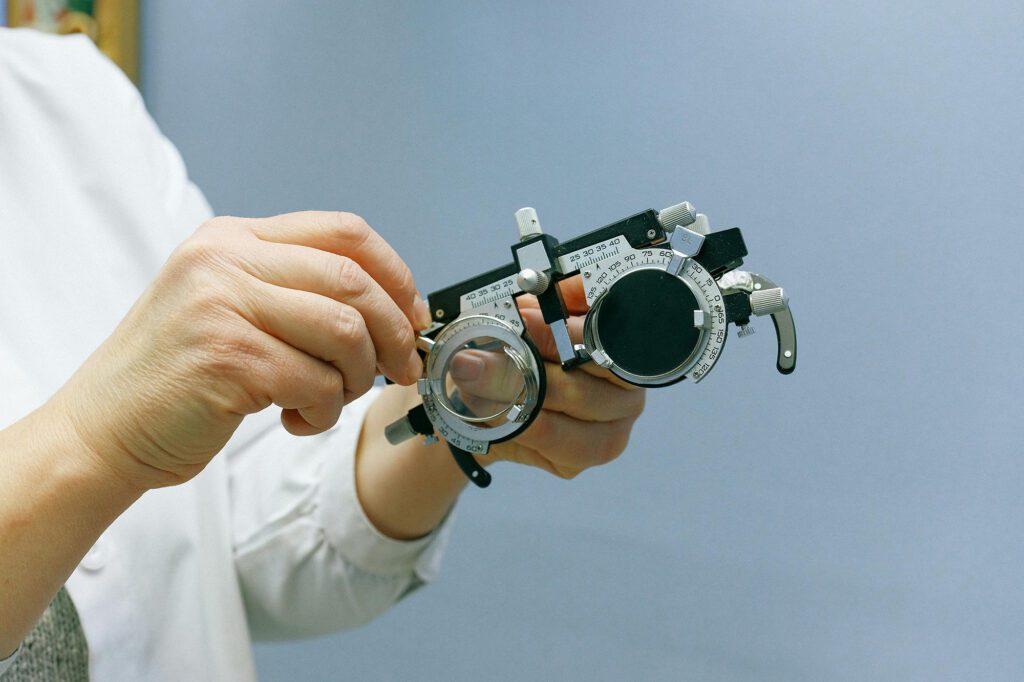
If your child frequently rubs their eyes or complains of discomfort in bright lights, these could be signs of eye strain or other vision problems. These symptoms often go unnoticed by parents, but they’re important indicators that an eye exam Reno may be needed. Regular pediatric eye exams can help detect any underlying conditions early, preventing long-term vision issues and supporting your child’s overall eye health.
If your child avoids tasks that require precise vision, such as reading small text or distinguishing between similar shapes, this could be a sign of an undiagnosed vision issue. These challenges may not just be a lack of interest but rather an indication that your child needs a thorough eye exam. Watching how your child performs in activities that demand visual accuracy can provide important clues about their eye health.
Frequent headaches or eye pain, especially after reading or engaging in visually intense activities, should not be overlooked. These symptoms often signal eye strain or other vision problems that require attention. Scheduling a pediatric eye exam in Reno can address these complaints early, preventing further discomfort and possible worsening of underlying conditions.
At Visionary Eye Center in Reno, we emphasize the importance of paying attention to your child’s vision. Regular eye exams for kids, even if they don’t show symptoms, play a key role in supporting their eye health and development. If you notice any of the signs listed above, don’t hesitate to schedule a pediatric eye exam near you. Our team is here to provide expert care and guidance for your child’s vision needs.
Early detection and treatment are essential for ensuring that your child’s vision supports their learning, growth, and happiness. Contact Visionary Eye Center for your eye exam in Reno and professional pediatric eye care tailored to your child’s unique needs.
Embarking on the journey of your child’s eye care can bring a mix of emotions, from curiosity to a bit of anxiety. Understanding what happens during a pediatric eye exam is crucial to demystifying the process and ensuring both you and your child approach this important health milestone with confidence. At Visionary Eye Center in Reno, we’re committed to providing a comforting and child-friendly environment for your family’s eye care needs. Here’s what you can expect during your child's first visit, helping to ease any apprehensions and make this experience a positive one.

Walking through the doors of Visionary Eye Center, you'll find a space designed with your child's comfort and curiosity in mind. The first pediatric eye exam is far from daunting; it's a non-invasive, engaging experience. Our eye care professionals are trained to work with children, explaining procedures in a way that’s easy to understand and ensuring that your child feels safe and valued throughout their visit. This initial appointment is not just about vision screening; it's an opportunity to build trust and lay the foundation for a lifetime of eye health.
From the moment you schedule your appointment, consider this an opportunity to talk to your child about the importance of seeing clearly and taking care of their eyes. Present the visit as a positive adventure, one where they'll get to play some "looking games" and maybe even look at some fascinating eye equipment, like the "pirate scope" or the "camera that takes pictures of your eye".
Preparation can make all the difference in ensuring a smooth and stress-free first eye exam for your child. Start by talking about the visit in positive, reassuring terms. Explain that the eye doctor is a friend who helps children see the world more clearly. You might even play pretend eye exams at home to familiarize your child with the concept.
Bring along a favorite toy or book as a comfort object. It's also helpful to write down any observations you’ve made about your child's vision or any concerns they’ve expressed, as well as questions you have, to discuss with the eye doctor.
A pediatric eye exam at Visionary Eye Center is thorough but straightforward. We start with vision testing using eye charts that may feature pictures or letters, catering to your child's age and reading ability. We assess eye alignment to ensure the eyes are working together properly and examine the health of the eye, from front to back, using lights and magnification. Techniques are gentle, and we strive to keep the atmosphere light and engaging, ensuring your child understands they can communicate any discomfort or ask questions at any time.
After the exam, we'll discuss the findings with you in clear, easy-to-understand language. Whether it’s prescribing glasses, recommending vision therapy, or simply scheduling the next check-up, we ensure you leave with a comprehensive understanding of your child's eye health and a plan for the future.
In the rare case that more specialized care is needed, we'll guide you through the options and next steps, ensuring you have the support and information needed to make the best decisions for your child's vision and overall well-being.
Your child’s first eye exam is more than a milestone—it’s the beginning of a lifelong journey towards maintaining healthy vision. By knowing what to expect and preparing your child for their visit, you're setting the stage for a positive and empowering experience. If you have any questions or wish to schedule your child's first pediatric eye exam, contact us at Visionary Eye Center in Reno. Together, we can ensure your child’s vision is clear and healthy, paving the way for a bright future.
Regular eye exams are a cornerstone of maintaining not just good vision but also overall health. At Visionary Eye Center in Reno, we understand that eye health is a critical aspect of your overall wellness. This article aims to shed light on why regular eye exams are essential for people of all ages and how they can help you make informed decisions about your eye care.
It's often said that prevention is better than cure, and this is particularly true for eye health. Many eye conditions, such as glaucoma and macular degeneration, develop silently, showing no noticeable symptoms in their initial stages. Regular eye exams are crucial in catching these conditions early. At Visionary Eye Center, our thorough eye exams are designed to identify such issues before they progress and cause irreversible damage. Early detection means early treatment, significantly improving the chances of preserving your vision and health.
Understanding the silent nature of many eye diseases underscores the importance of regular check-ups. Conditions like glaucoma, often referred to as the “silent thief of sight,” can progress unnoticed. By the time symptoms become apparent, significant vision loss may have already occurred. Routine eye exams can detect these conditions when they are most treatable.
Our eyesight changes as we age, making regular eye exams essential. These exams ensure that any changes in your vision are identified promptly. Whether you need a new prescription for your glasses or adjustments to your current eyewear, regular eye checks help keep your vision sharp and clear. At Visionary Eye Center, we can guide you through these changes, ensuring your vision needs are met at every stage of life.
As you age, you might notice changes in your vision. Maybe you're struggling to read fine print, or distant objects aren't as clear as they used to be. Regular eye exams allow us to track these changes and adjust your prescription, ensuring optimal vision and comfort.
Did you know that an eye exam can reveal much more than just eye-related issues? Your eyes are windows to your overall health, providing clues about systemic diseases like diabetes or hypertension. The blood vessels and nerves in your eyes can show signs of these conditions, often before other symptoms appear. Regular eye exams at Visionary Eye Center can therefore play a critical role in your overall health management.
The comprehensive eye exams at Visionary Eye Center can detect signs of diabetes, high blood pressure, and even cholesterol issues. This makes eye exams an integral part of your healthcare routine, offering insights that go beyond vision care.
For children, vision is closely linked to learning and social development. Regular eye exams are vital in ensuring that children have the visual tools they need to succeed in school and life. Vision problems can significantly impact a child’s academic performance, so catching and correcting these issues early is crucial.
Eye exams for children at Visionary Eye Center are about more than just checking for glasses. They're about ensuring that each child has a solid foundation for development and learning. Regular exams can help identify issues that might impede a child’s ability to read, learn, and engage in activities, setting them up for success from a young age.
We encourage you to prioritize your eye health by scheduling regular eye exams at Visionary Eye Center. These exams are a critical step in maintaining not only your vision but also your overall health. If it's time for an updated prescription or you're interested in exploring new eyewear options, our team is here to assist you. Remember, taking care of your eyes is taking care of your future.
Your eyes are windows to the world, but they can also be sources of discomfort and concern. In Reno, where the climate and lifestyle can impact eye health, understanding how to manage common eye problems is crucial. Visionary Eye Center, a leading group of Reno eye doctors, offers practical advice for dealing with issues like dry eyes, red eyes, and eye infections.
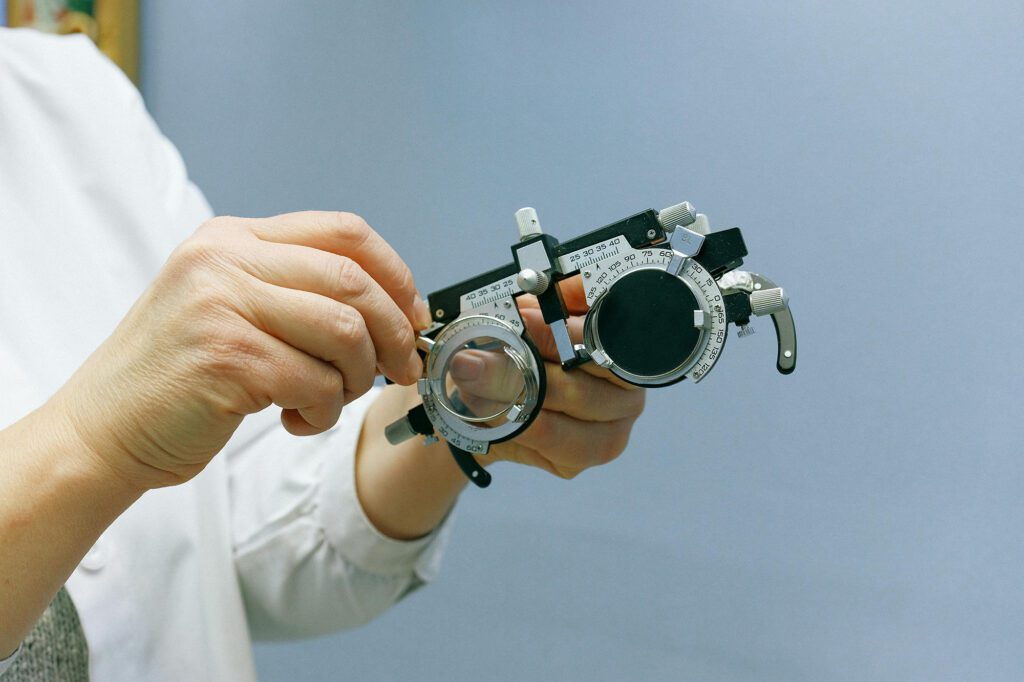
Dry eyes can result from environmental factors like Reno's dry air, certain medications, age-related changes, and prolonged contact lens use. Recognizable by a gritty feeling, burning sensation, and temporary blurred vision, dry eyes are more than just an annoyance.
Combatting dry eyes involves a combination of using lubricating eye drops and avoiding conditions that exacerbate the issue. Regular breaks from screen time, staying hydrated, and using a humidifier can also help.
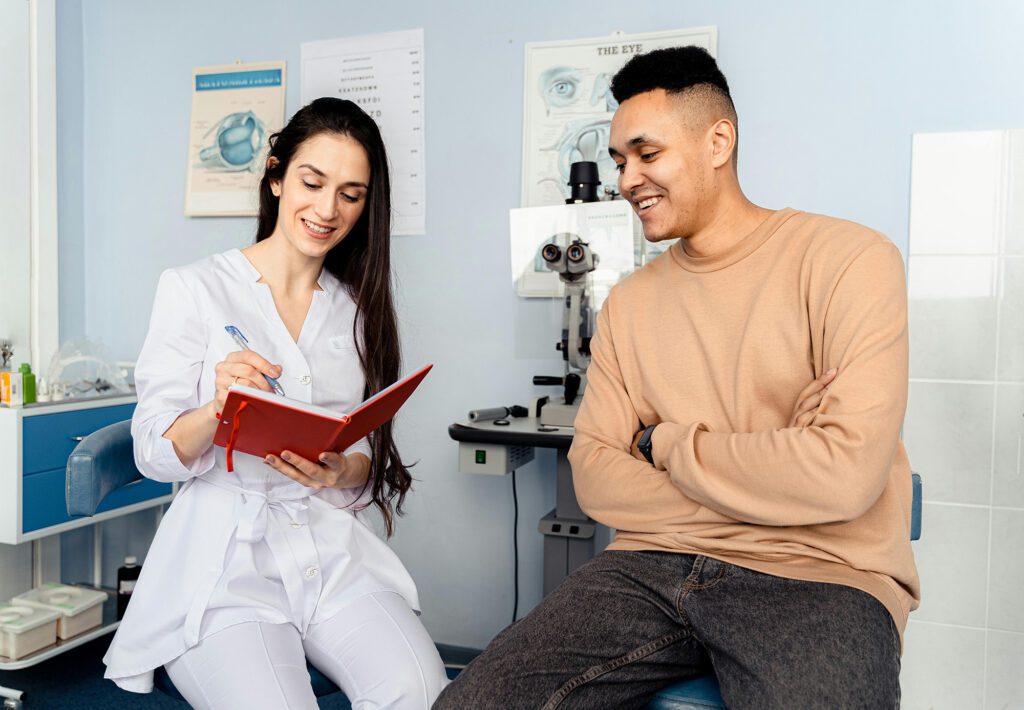
Red eyes can stem from allergies, eye strain, or more serious conditions like infections. Keeping your hands clean, avoiding eye-straining activities, and using appropriate eye protection are key preventative steps.
For temporary relief, cool compresses and proper eyelid hygiene can be effective. However, persistent red eyes may indicate an underlying issue that requires professional attention.
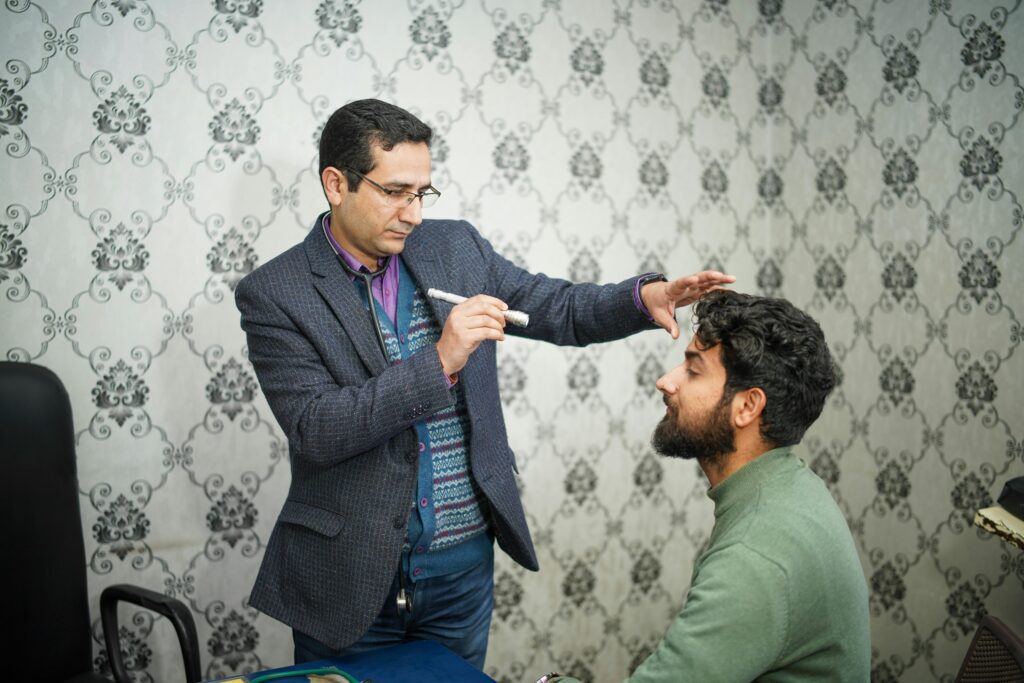
Eye infections, caused by bacteria, viruses, or fungi, often present symptoms like redness, pain, discharge, and light sensitivity. Treatments vary but typically include medicated eye drops or ointments. For contact lens wearers, maintaining good hygiene is crucial for prevention.
Persistent, worsening, or severe symptoms warrant a visit to an eye care professional. Delaying proper care can lead to complications and should be avoided.
Persistent or severe eye problems should prompt a visit to an eye care professional. Self-diagnosis and treatment can delay effective care and potentially lead to complications. Visionary Eye Center in Reno offers expert care for various eye conditions and can provide tailored solutions for your eye health needs.
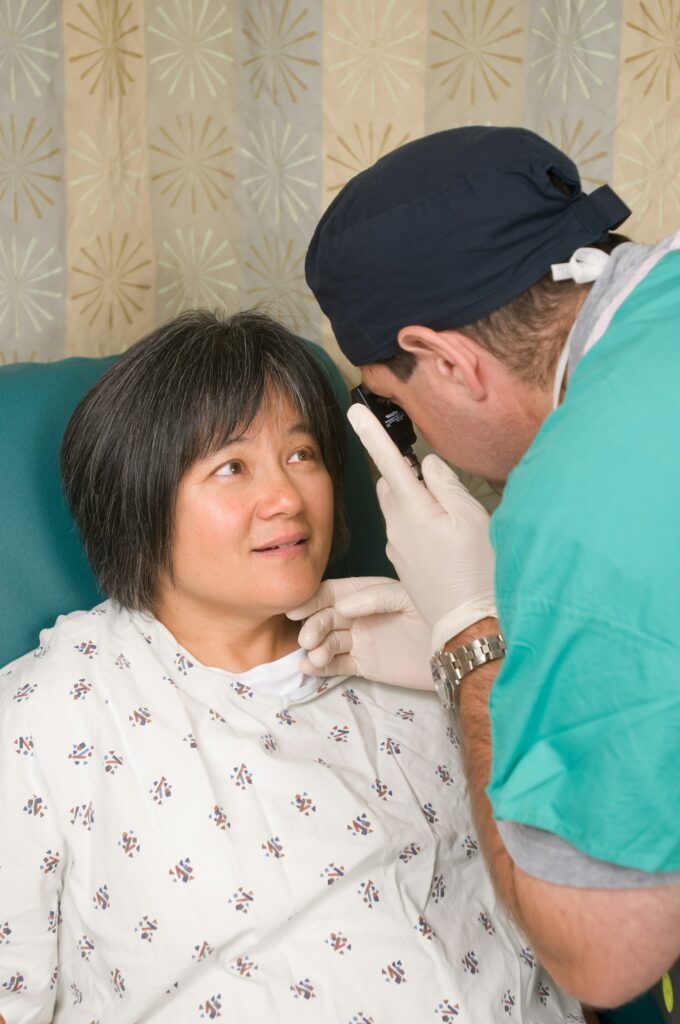
When it comes to vision correction in Reno, LASIK surgery is a widely known option. However, it's not the only path to clearer vision. For those who may not be ideal candidates for LASIK, there are several effective alternatives. Visionary Eye Center in Reno offers insights into choosing the right LASIK alternative based on individual vision needs.
ICL, a suitable option for individuals with thin corneas or chronic dry eye, involves placing a thin lens within the eye. This 20-minute procedure per eye is known for minimal side effects, although recovery can span several months.
ICL is not just a short-term solution. It offers long-lasting vision correction, making it a worthwhile consideration for those ineligible for LASIK.
Photorefractive Keratectomy (PRK) reshapes the cornea by removing its outer layers. It's a preferred choice for those with thin corneas who can't undergo LASIK. While the recovery from PRK can be longer and more uncomfortable, it's highly effective, especially for athletes or pilots.
The post-PRK recovery period may involve more discomfort compared to LASIK, but the outcomes in terms of vision correction are commendable.
Refractive Lens Exchange (RLE) replaces the eye's natural lens with a synthetic one. It's particularly beneficial for those over 40, addressing presbyopia and early cataracts. RLE suits individuals with strong prescriptions not correctable by LASIK.
RLE not only corrects vision but also prevents the future development of cataracts, offering a dual benefit for aging eyes.
LASEK surgery, similar to LASIK and PRK, is recommended for people with thin or flat corneas. The recovery period can be prolonged, with potential side effects like dry eyes and light sensitivity. Choosing between LASIK, PRK, and LASEK depends on individual eye structure, lifestyle, and vision goals.
After exploring these alternatives, it's crucial to consult with eye care professionals to determine the most suitable option. At Visionary Eye Center, we assess your specific vision correction needs to recommend the best procedure.
We invite you to visit Visionary Eye Center in Reno to explore these LASIK alternatives. Our team is dedicated to providing personalized care, ensuring you receive the best treatment for your unique vision needs.
In the bustling city of Reno, Nevada, a sanctuary of eye care exists that has been serving the community since 2004. Nestled among the landscapes of Sparks, Carson City, and Lake Tahoe, Visionary Eye Center is more than just an eye clinic; it is a haven for those seeking custom visual solutions crafted with the utmost expertise. Today, let's cast our gaze on the real visionaries behind this institution — Dr. Bolenbaker.
With a history spanning nearly two decades, Visionary Eye Center's unparalleled services can be attributed to the dedicated doctor who brings his wealth of knowledge to the examination room. His level of commitment isn't merely in treating eye conditions; it's about understanding the individuals who walk through the doors and providing tailored solutions to meet their specific needs.
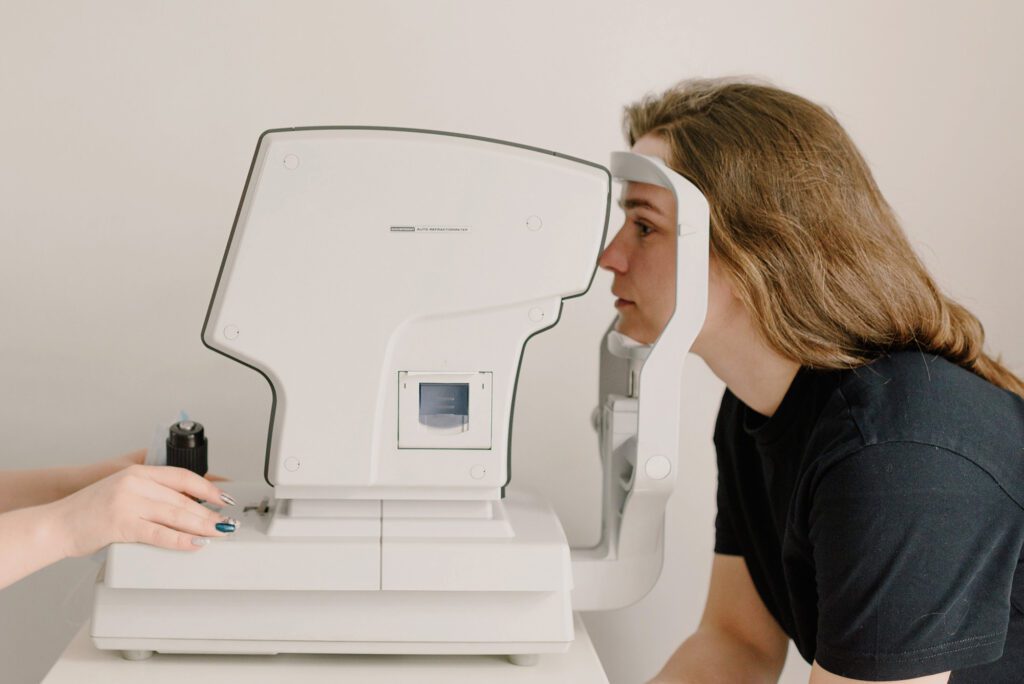
There are countless eye clinics that offer glasses and contact lenses, but how many can boast a genuinely customized experience? At Visionary Eye Center, the idea of individualism extends far beyond selecting the color of your eyeglass frame. Here, Dr. Bolenbaker dedicates his time to offer solutions that are as unique as the eyes he treats. From custom size, shape, and color adjustments to a wide selection of custom lens options, the variety is incredible.
The center's contact lens clinic is nothing short of revolutionary. Led by a doctor who specialize in hard-to-fit conditions like keratoconus, you're not just another patient; you're a person in need of a specific solution. Custom color contact lenses and orthokeratology for myopia control? He has it all, and his expertise in this area is unmatched in the region.
Arguably, one of the most touching aspects of Visionary Eye Center is its low vision specialty clinic. Dr. Bolenbaker is not just a healthcare provider; he's a life-changer. He understand the struggles that partially sighted individuals face and have taken it upon themselves to offer a range of electronic aids and magnifiers to help these patients regain independence in their daily activities.
The scope of services offered at Visionary Eye Center is broad, to say the least:
Digital Lifestyle Exam: A thorough examination that adapts to modern-day digital needs.
Contact Lenses & Specialty Contacts: Ranging from standard options to highly specialized lenses.
Orthokeratology & Myopia Control: Leading-edge solutions for increasingly worsening childhood nearsightedness.
Low Vision Clinic: A unique specialty clinic for those with partial sight.
Medical Eye Care & Pediatric Eye Care in Reno: Providing comprehensive services for all age groups.
Dry Eye Care: Tailored solutions for one of the most common eye issues.
LASIK surgery: An option for those looking for a more permanent solution to their vision problems.
At Visionary Eye Center, technological advancements go hand in hand with a deep-rooted human touch. Amidst the spectrum of state-of-the-art services, the true distinction lies in the Dr. Bolenbaker's genuine approach to understanding patients. This is not a mere routine check-up; it's an exploration into the patient's lifestyle and individual needs. Visionary Eye Center propagates a holistic vision of eye care, embracing the belief that patient care resonates beyond clinical walls, reaching straight to the heart.
Peering into the horizon, Visionary Eye Center emerges as the beacon of advanced eye care in Northern Nevada and its surroundings. The establishment isn't just an eye care center; it's a testament to what the future of healthcare epitomizes. With a doctor dedicated to innovative techniques, empathetic patient interaction, and relentless commitment, the center exemplifies the pinnacle of healthcare.
In the vast landscape of vision correction, refractive surgeries have emerged as remarkable marvels of modern medical science. From the rudimentary days of radial keratotomy, we have traveled a revolutionary path, leading us to procedures that have not just changed vision but lives. At the forefront of this journey stands the Visionary Eye Center, constantly evolving to offer top alternatives to LASIK.
Modern refractive surgery's inception began with photorefractive keratectomy (PRK). Almost in tandem, LASIK (laser-assisted in situ keratomileusis) soon followed, becoming ubiquitous not just in Reno, NV but globally. These state-of-the-art procedures quickly eclipsed radial keratotomy, owing to their enhanced safety, predictability, and stability. Both these methods deploy a laser to meticulously reshape the cornea. LASIK involves a flap formation laid over the treated area, catering to those seeking swift recovery. In contrast, PRK targets those with larger prescriptions, applying the laser directly sans flap. A fusion of the two, LASEK (Laser epithelial keratomileusis), employs a gentle epithelial slide off the eye's front, subsequently replaced post-treatment, often resulting in decreased dryness.
For those with high prescription values or a reluctance to permanently alter their corneal tissue, ICL (Implantable Contact Lens) offers a brilliant solution. This procedure delicately places a lens between the iris and the eye's natural lens. It's reversible and minimally invasive, ensuring a trauma-free experience.
The journey into presbyopia, experienced post the age of 40, demands specialized solutions. One of the groundbreaking procedures involves the implantation of corneal inlays such as Kamra or Raindrop. These inlays enhance the eye's depth of focus by leveraging a pinhole effect, reviving near vision. Another feather in the cap of presbyopic treatments is the refractive lens exchange, which replaces the natural lens with an intraocular implant lens. It's essentially cataract surgery but provides options from distance to multifocal vision.
Orthokeratology, fondly known as ortho-k, offers a non-surgical panorama to reshape the cornea and optimize vision. These specialized corneal molds reshape the eye's front surface, primarily during sleep. Tracing its roots to the 1950s, today's ortho-k has the FDA's nod from 2002. While its multiple names, from gentle vision shaping to corneal refractive therapy, might seem complex, its objective remains singular - exceptional vision.
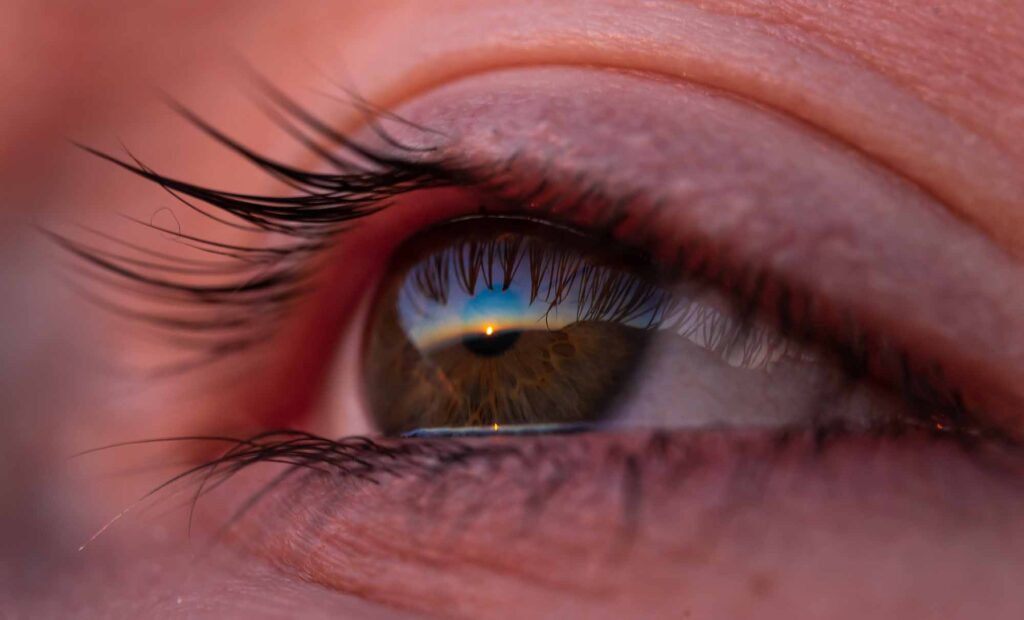
Ideal candidates? Nearsighted individuals with prescriptions under -6.00D sphere and below -1.75D of cylinder or astigmatism. The younger brigade, especially children, adapt with ease, often seeing faster results. With recent technological strides, mild farsightedness and presbyopia too find themselves under the ortho-k umbrella. Particularly beneficial for swimmers and those battling contact lens-induced dryness, ortho-k eliminates daytime lens wear.
Safety remains paramount with ortho-k. Using advanced oxygen permeable materials, it’s as safe as regular contact lens wear. The reversible nature of ortho-k is a boon, ensuring vision returns to its original state upon discontinuation.
Nestled in the heart of Reno-Sparks, Visionary Eye Center emanates from a dream to proffer bespoke eye care solutions. Every individual's vision narrates a unique story, demanding equally unparalleled corrective tools. This philosophy fuels the center's drive to provide custom contact lenses and frames.
Independence is the hallmark of Visionary Eye Center. Eschewing the trappings of large chains or franchises, the center fosters genuine doctor-patient relationships, a rarity in today's commercialized medical landscape. Yet, this traditional relationship doesn't preclude them from harnessing the latest technology and treatments.
An educated patient, they believe, is an empowered patient. By illuminating patients about treatment options, Visionary Eye Center ensures individuals remain at the heart of every decision. Their dedication to vision resonates not just in their cutting-edge offerings but in their commitment to fostering a community informed and passionate about eye health.
So, whether you're considering a deep dive into vision correction or merely seeking an authentic, personalized eye care experience, Visionary Eye Center beckons, promising a future where every vision is clear, and every patient feels seen.
In today's world, where advancements in medicine and technology are progressing at breakneck speeds, questions about the aftermath of treatments are just as important as the treatments themselves. One frequently asked question for those considering refractive surgery is, "Can you drive home after LASIK eye surgery?"
To answer this, let's first journey through the evolution of modern refractive surgery and understand its nuances. Visionary Eye Center, the premier provider of LASIK in Reno, will be taking a deep dive into the effect of LASIK surgery on driving.

Long before LASIK came into the picture, there was radial keratotomy. However, modern refractive surgery truly began with the groundbreaking invention of photorefractive keratectomy (PRK). Soon after PRK, the world welcomed LASIK (laser-assisted in situ keratomileusis) eye surgery. A procedure that is now readily accessible not just in global hubs, but also right here in Reno, NV.
Compared to radial keratotomy, both PRK and LASIK were leaps and bounds ahead, offering increased safety, predictability, and stability. While both utilize lasers to reshape the cornea, LASIK involves creating a flap that's placed over the treated area, whereas PRK directly applies the laser without creating a flap. This distinction means that LASIK usually ensures a quicker recovery, making it a popular choice among many. Meanwhile, PRK is recommended for those with larger prescriptions.
But the world of refractive surgery doesn't end there. There's also LASEK (Laser epithelial keratomileusis), which merges the best of both worlds. Instead of creating a flap, the epithelium is gently slid off and then replaced post-treatment. And for those with more significant prescriptions or a preference against permanent corneal tissue removal, there's the option of an ICL (Implantable Contact Lens).
Presbyopic patients aren't left behind either. With innovations like the Kamra or Raindrop corneal inlays, reading vision can be restored. Another noteworthy procedure is the refractive lens exchange, similar to cataract surgery, replacing the natural eye lens with an intraocular implant lens, offering various vision settings.
Now, understanding the intricacies of these procedures, it becomes paramount to choose the right center. That's where Visionary Eye Center in the Reno-Sparks area comes into focus.
Visionary Eye Center isn't just another eye care provider. Born from the commitment to offer bespoke eye care solutions, they believe in tailoring treatments to fit each individual's unique vision. Whether it's custom frames that resonate with your personality or specialized contact lenses designed for your comfort, their offerings are as unique as you.
Independence is a virtue that Visionary Eye Center holds dear. Steering clear from the mold of multi-practice chains or franchises, they offer patients an opportunity to build genuine, lasting relationships with their doctors. But don't mistake their belief in traditional doctor-patient relationships as being archaic. Their independence ensures they remain agile, adopting the latest in eye care technology and treatments. This means you aren't restricted to outdated procedures or bulk products.

Perhaps most importantly, Visionary Eye Center thrives on empowering its patients. Their philosophy is simple yet profound: an educated patient makes better health decisions. With a plethora of information available on their site and regular updates on their social platforms, they ensure you're well-equipped to make the best choices for your eyes.
To circle back to our initial question: Can you drive home post-LASIK? It's recommended to have someone drive you home as your vision might be blurry or hazy for several hours. But when you're deciding where to get LASIK, driving a little extra to ensure you're in capable, caring hands is worth every mile.
So, if you're contemplating LASIK or any other eye procedure, look no further than Visionary Eye Center. With cutting-edge technology, individualized treatments, and a dedicated team, it truly is vision care at its finest.
Disclaimer: The information provided in this blog is for general informational purposes only and should not be considered as medical advice; always consult with a qualified healthcare professional before making any decisions related to your eye health.
The world of vision correction has evolved dramatically over the years. From the rudimentary practice of radial keratotomy, eye care has embraced monumental advancements, culminating in the development of Photorefractive Keratectomy (PRK) and LASIK (Laser-Assisted In Situ Keratomileusis). Visionary Eye Center, located in the heart of Reno, NV, has been at the forefront of this evolution, offering a spectrum of cutting-edge solutions for those seeking clearer, sharper vision. Visionary Eye Center are the experts when it comes to the LASIK procedure in Reno.
The early seeds of modern refractive surgery sprouted with the invention of PRK, followed by the birth of LASIK eye surgery. These techniques, far safer and more reliable than radial keratotomy, relied on the precision of lasers to reshape the cornea - the eye's front surface. The differences between the two lay in their application: LASIK involves the creation of a flap laid over the treated area, while PRK applies the laser directly onto the cornea, eschewing a flap. The choice between the two often hinges on individual needs, with LASIK offering a speedier recovery and PRK catering more towards those with larger prescriptions.
But innovation didn't halt there. The advent of LASEK (Laser Epithelial Keratomileusis) introduced a novel technique, gently sliding the epithelium off the eye's front, then replacing it after treatment. This method, while retaining the advantages of PRK and LASIK, significantly reduces dryness compared to LASIK, making it a compelling option for patients prioritizing comfort during recovery.
For individuals with higher prescription requirements or those uneasy with permanently removing corneal tissue, the introduction of the Implantable Contact Lens (ICL) has been a game-changer. This technique involves inserting a small lens between the iris and the eye's natural lens. Notably, the procedure is reversible and inflicts minimal trauma on the eye, providing an attractive solution for patients seeking a trial before a more permanent decision.
The landscape of vision care also offers hope for presbyopic patients, or those over the age of 40. Corneal inlays, like the Kamra or Raindrop, can be inserted into the cornea, creating a pinhole effect that extends the eye's depth of focus and restores near vision. Simultaneously, refractive lens exchange provides another avenue. In this procedure, the natural lens of the eye is replaced with an intraocular implant lens – a procedure akin to cataract surgery. With various setup options available, including distance, monovision, and multifocal setups, presbyopic patients can regain control over their vision.

For those wary of surgery but eager to free themselves from the confines of glasses or contact lenses, Visionary Eye Center is proud to offer orthokeratology. This non-surgical intervention represents an alternative to refractive surgery, and can be an excellent solution for patients seeking another path to visual freedom.
At Visionary Eye Center, we believe in a personalized approach to eye care. As an independent provider, we aren't limited by the constraints of a vertically integrated multi-practice chain, big box store, or national franchise. Our independence empowers us to develop strong doctor-patient relationships, rooted in the belief that every patient deserves custom solutions tailored to their unique visual needs.
Our commitment to personalization extends to our embrace of modern technology. We're able to leverage the latest breakthroughs in eye care, allowing us to offer a wide variety of options to our patients, from state-of-the-art surgical interventions to high-quality eyewear products. Far from being stuck with outdated bulk products, our patients enjoy access to the best the world of vision care has to offer.
In our pursuit of providing unparalleled care, we operate with a firm conviction: an educated patient makes superior health decisions. At Visionary Eye Center, patient education is not an afterthought, but an integral part of our approach. Our dedicated team of professionals endeavors to enlighten every patient about their treatment options, empowering them to make the best choices for their eye health.
We invite you to navigate our website and learn more about the wealth of information we've curated about eyes and vision. For the latest tips, offerings, and updates, follow us on our Facebook and Instagram pages. We eagerly anticipate welcoming you at our office and partnering with you on your journey towards better vision. At Visionary Eye Center, our commitment to you extends beyond simple vision correction—we aim to provide vision for life.
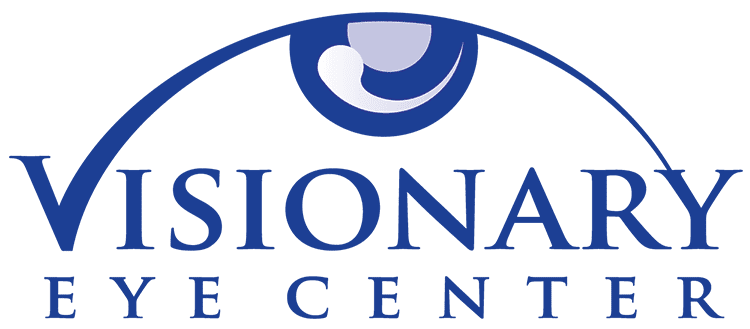 775.827.1100info@visionaryeyecenter.com8175 South Virginia Street Suite B-900
775.827.1100info@visionaryeyecenter.com8175 South Virginia Street Suite B-900